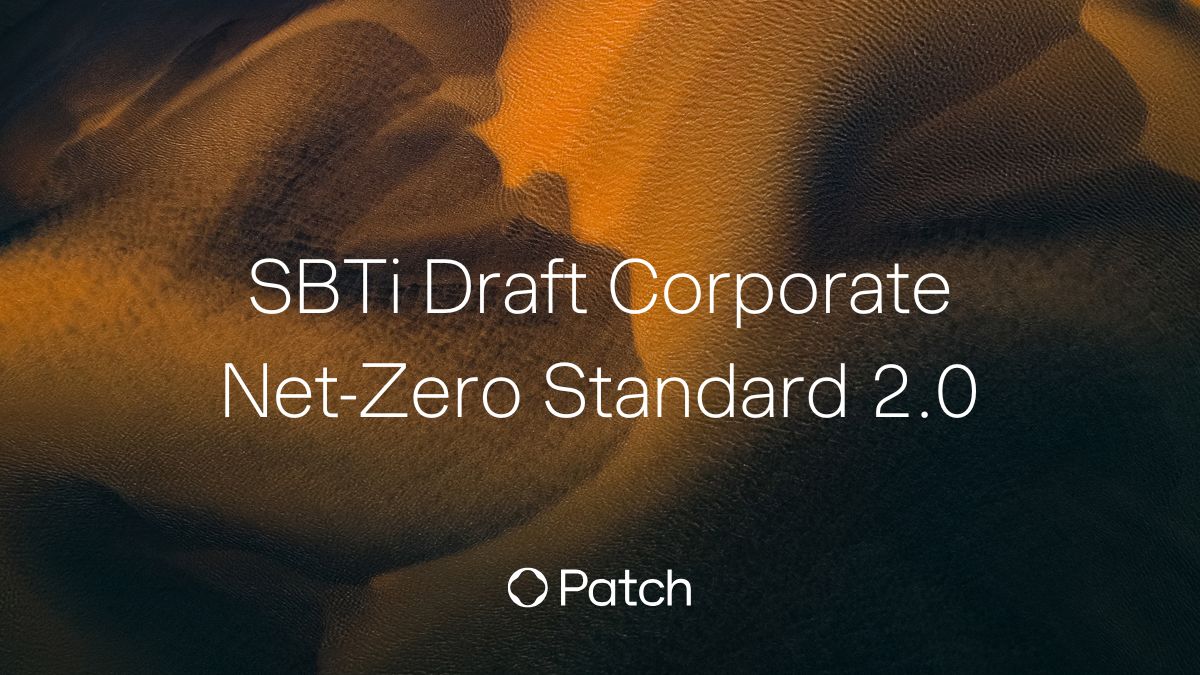Corporate sustainability leaders wear many hats, from business-level decarbonisation strategist to public relations spokesperson. But one of the most critical and complicated is compliance manager.
As more and more regulations come online around the world governing how companies act on climate change — and equally importantly — speak about their action, that role will become increasingly complex. Leaders of companies operating in Europe know this better than anyone. The European Union (EU) already has some of the most developed sustainability requirements in the world, including today’s topic: The Corporate Sustainability Reporting Directive (CSRD).
What does the CSRD mean for companies?
The CSRD rules require companies to report on a broad set of ESG metrics, all the way from scope 1, 2, and 3 emissions to human rights in their organisations and supply chains — and lots in between. Critically for Patch customers and other participants in carbon markets, the CSRD also requires companies to disclose information on the use of carbon credits — any they’ve purchased or intend to purchase — including how many tonnes of credits, the type of project, the verification standard, the project location, and more. As with the reporting requirements within California’s AB 1305, Patch can help make it easy for companies to access all the information necessary to comply.
What companies are subject to the CSRD?
All large, EU-based companies — both public and private — are now subject to these mandatory rules. That’s almost 50,000 companies, including small and medium enterprises (SMEs), though those smaller companies will have more time to comply. Moreover, companies that may be based outside the EU but generate more than €150 million within the EU are also subject to these reporting requirements.
When do companies need to file their CSRD reports?
Starting this year — financial year (FY) 2024 — large listed companies, large banks, and large insurance undertakings in the EU with more than 500 full-time employees as well as non-EU listed companies with more than 500 employees will need to file their CSRD reports in January 2025.
Mandatory compliance will begin later for other companies:
FY 2025: Other large companies, including large non-EU listed companies
FY 2026: Listed SMEs (less than 500 employees), including non-EU listed SMEs, with an optional opt-out for two years.
FY 2028: Non-EU companies that generate over €150 million per year in the EU and that have in the EU either a branch with a turnover exceeding €40 million or a subsidiary that is a large company or a listed SME. (Separate standards will be adopted specifically for this case.)
What information does the CSRD require for carbon credits?
Patch’s Climate Strategy and Solutions team can provide you with a clear report containing the information you need to disclose on your use of carbon credits. That way you are well prepared when compiling data for CSRD. Here’s an example for a biochar credit purchase:
%2520(2).jpeg)
Want help compiling information on your carbon credit purchases? Whether it’s CSRD or AB 1305, Patch’s unprecedented access to and centralisation of data makes it much simpler for sustainability leaders to have the information they need to comply with international regulations on carbon credits. Talk to our climate experts today for more information.






